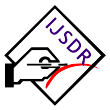Imp Links for Author
Imp Links for Reviewer
Research Area
Subscribe IJSDR
Visitor Counter
Copyright Infringement Claims
Indexing Partner
|
Published Paper Details
|
|
| Paper Title: | ESTIMATION OF CAFFEINE CONTENT FROM SOFT AND ENERGYDRINKS OBTAINED FROM REGIONAL MARKET BY UV SPECTROSCOPY AND TLC. |
| Authors Name: | Saloni Desai |
| Unique Id: | IJSDR2004015 |
| Published In: | Volume 5 Issue 4, April-2020 |
| Abstract: | This research is for to estimate the concentration of caffeine in soft drinks and energy drinks. In pure form, caffeine is a crystalline white powder moderately soluble in water and in a wide range of organic solvent such as ethanol, ethyl acetate, methanol, dichloromethane, chloroform etc. The caffeine is determined by using UV-Visible spectroscopy method using dichloromethane as an extracting solvent at 273nm wavelength. The method was found to be fast, simple, cost effective and environmental friendly for the determination of caffeine in soft drinks with satisfactory results. Caffeine is found in many beverages such as coffee, tea, energy drinks and cola, which make the drinks addictive. Caffeine content in various energy drinks and beverage varies from 10 to 50 mg of caffeine per serving; however the US Food and Drug Administration (FDA, 2006) limits the maximum amount in carbonated beverages to 6 mg/oz. Large amount of caffeine consumption can cause physiological and psychiatrically dependence. The aim of this study is to determine the concentration of caffeine in soft drinks and energy drinks brands available in India to ensure whether the caffeine concentration in the follow soft drinks & energy drinks as per FDA recommendation or not. And other purpose of this research is to find erosion property of caffeine by determining buffer capacity. This research also helps to identify purity of caffeine by TLC (By measuring Rf value of sample compared with standard caffeine). |
| Keywords: | Caffeine, soft drinks & energy drinks, UV Spectroscopy, TLC |
| Cite Article: | "ESTIMATION OF CAFFEINE CONTENT FROM SOFT AND ENERGYDRINKS OBTAINED FROM REGIONAL MARKET BY UV SPECTROSCOPY AND TLC.", International Journal of Science & Engineering Development Research (www.ijsdr.org), ISSN:2455-2631, Vol.5, Issue 4, page no.96 - 104, April-2020, Available :http://www.ijsdr.org/papers/IJSDR2004015.pdf |
| Downloads: | 000337073 |
| Publication Details: | Published Paper ID: IJSDR2004015 Registration ID:191552 Published In: Volume 5 Issue 4, April-2020 DOI (Digital Object Identifier): Page No: 96 - 104 Publisher: IJSDR | www.ijsdr.org ISSN Number: 2455-2631 |
|
Click Here to Download This Article |
|
| Article Preview | |
|
|
|
Major Indexing from www.ijsdr.org
| Google Scholar | ResearcherID Thomson Reuters | Mendeley : reference manager | Academia.edu |
| arXiv.org : cornell university library | Research Gate | CiteSeerX | DOAJ : Directory of Open Access Journals |
| DRJI | Index Copernicus International | Scribd | DocStoc |
Track Paper
Important Links
Conference Proposal
ISSN
 |
 |
DOI (A digital object identifier)
  Providing A digital object identifier by DOI How to GET DOI and Hard Copy Related |
Open Access License Policy
Social Media
Indexing Partner |
|||
| Copyright © 2024 - All Rights Reserved - IJSDR | |||






Facebook Twitter Instagram LinkedIn